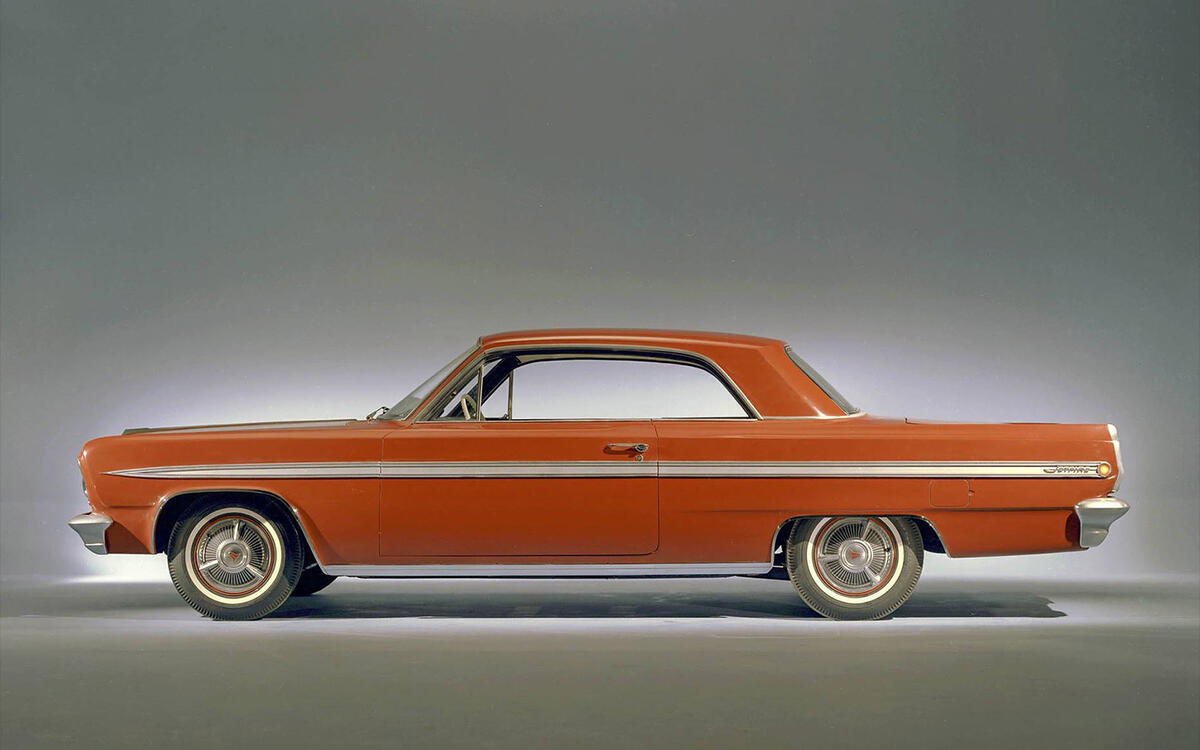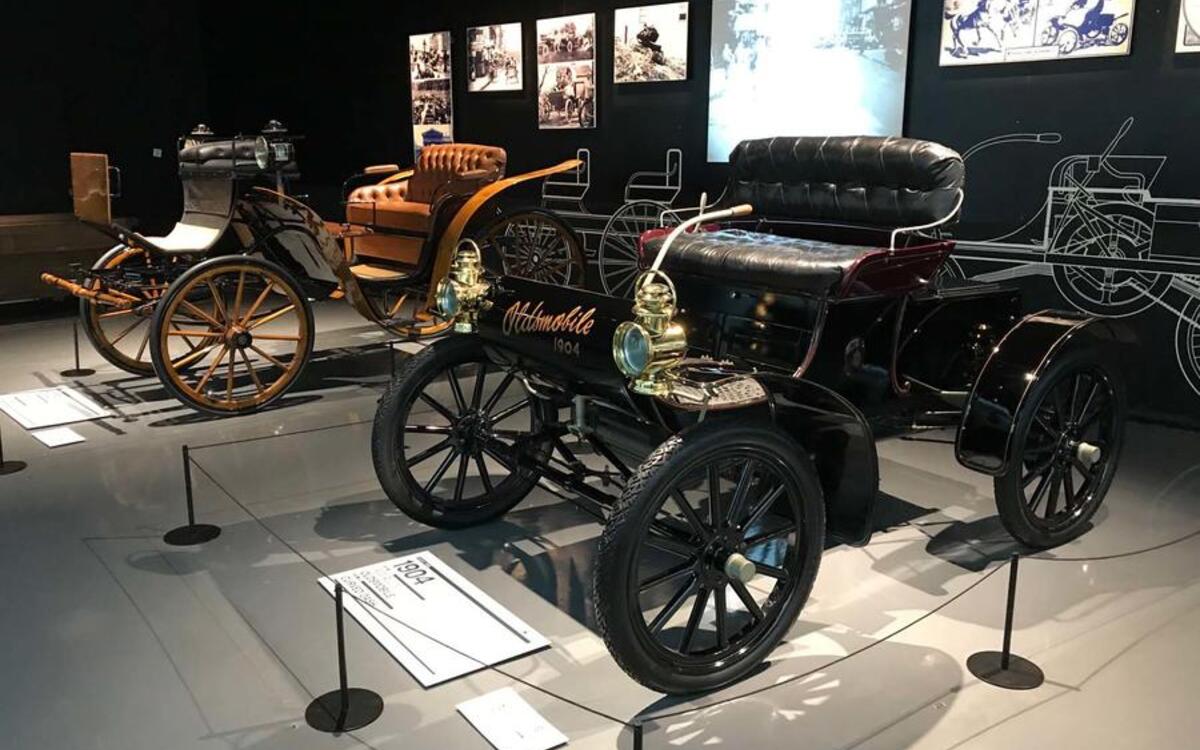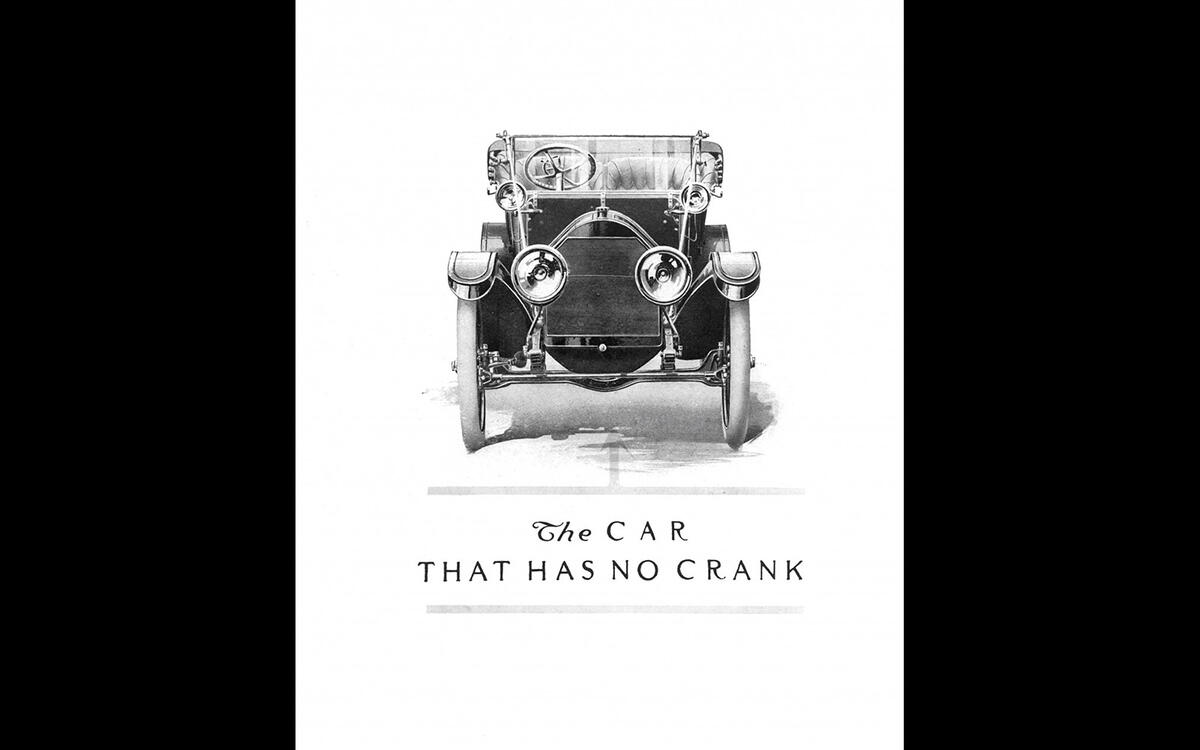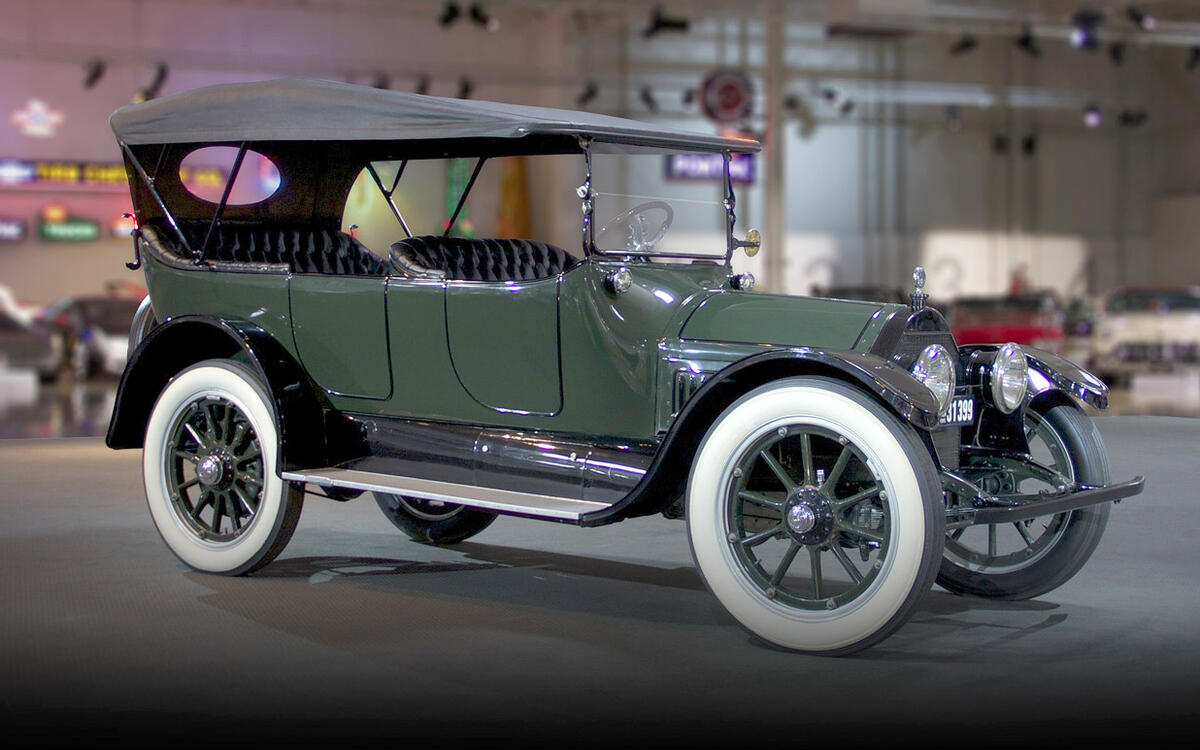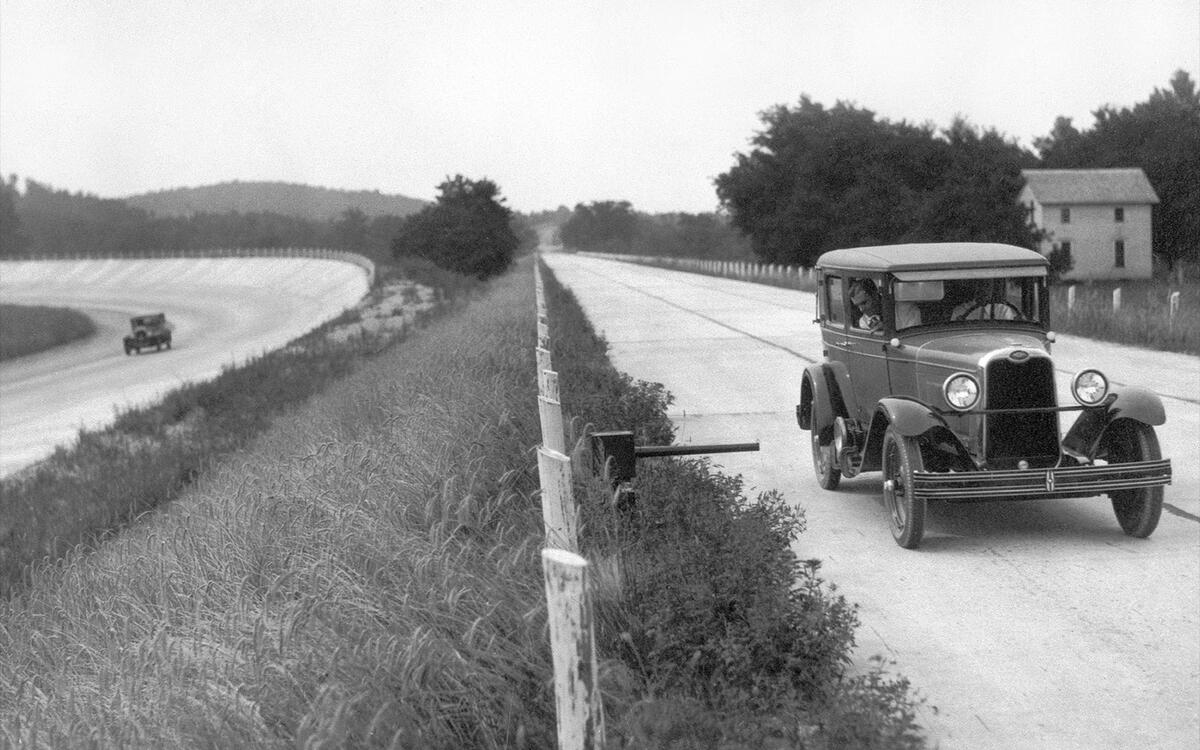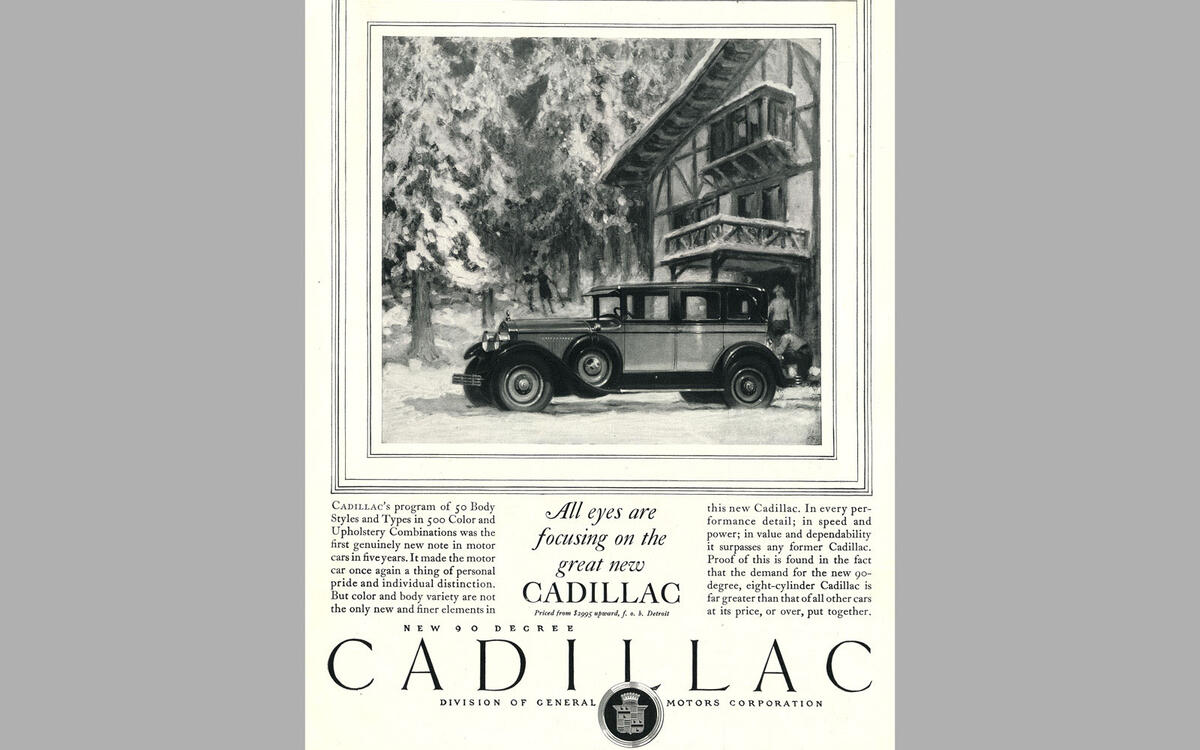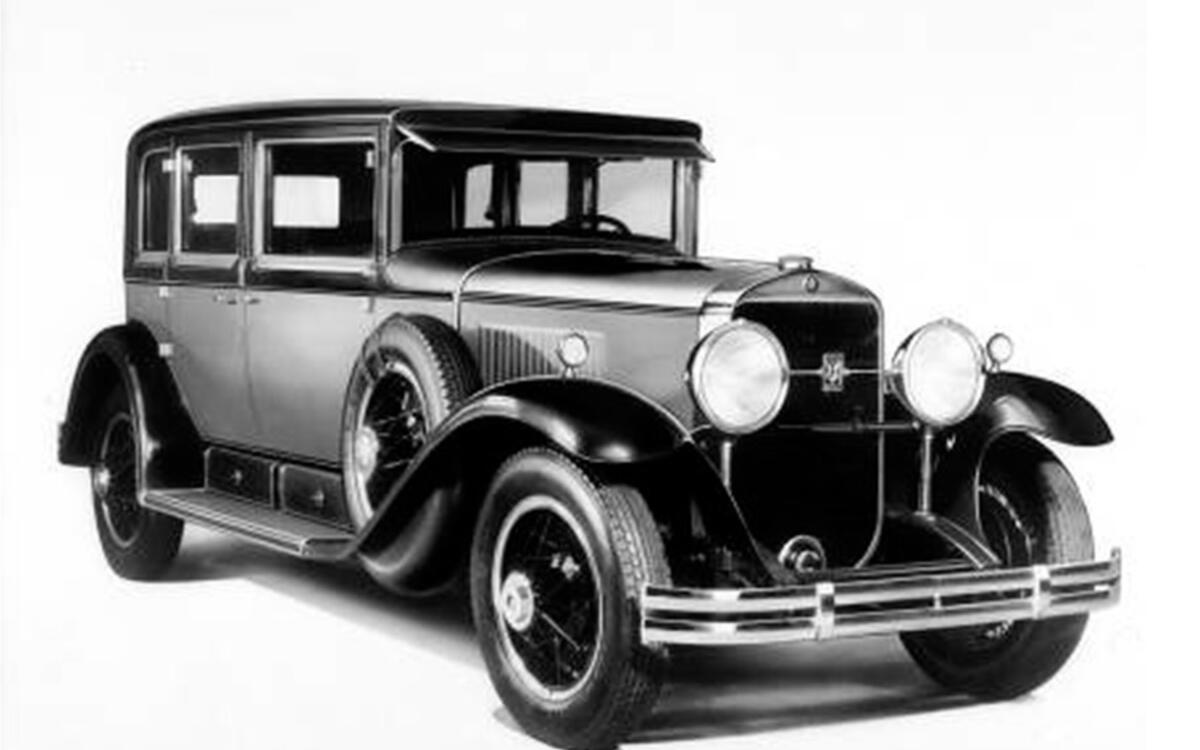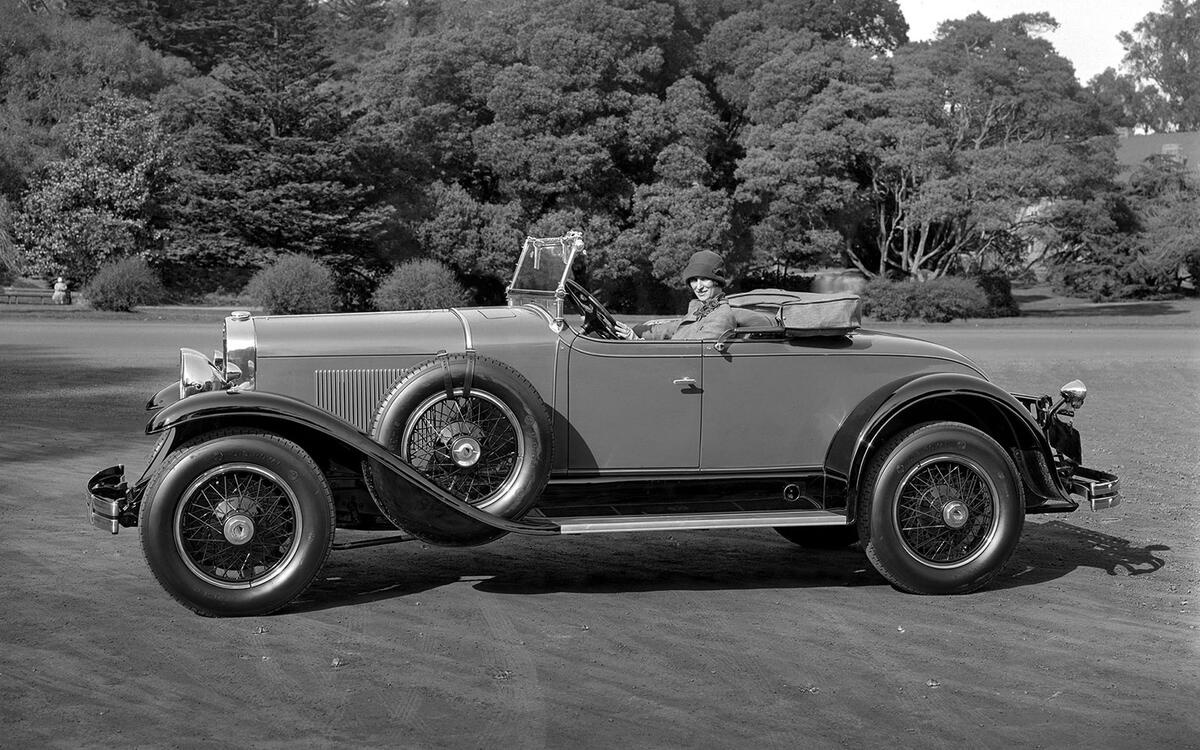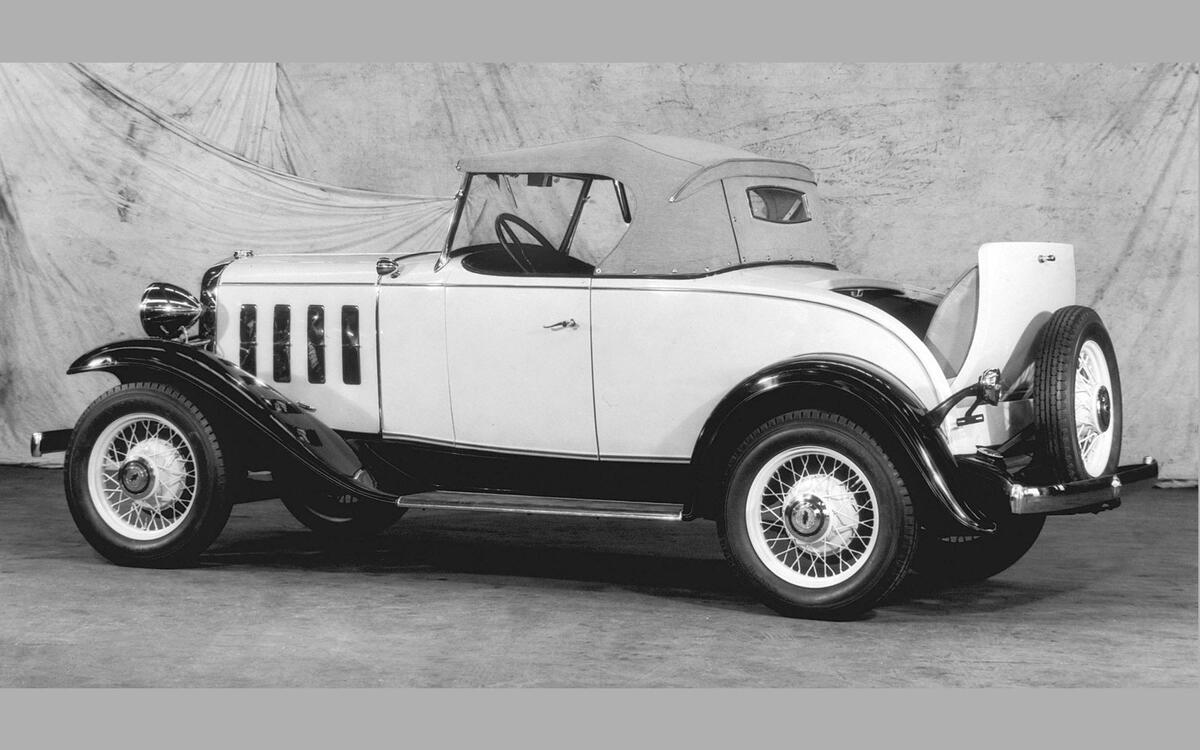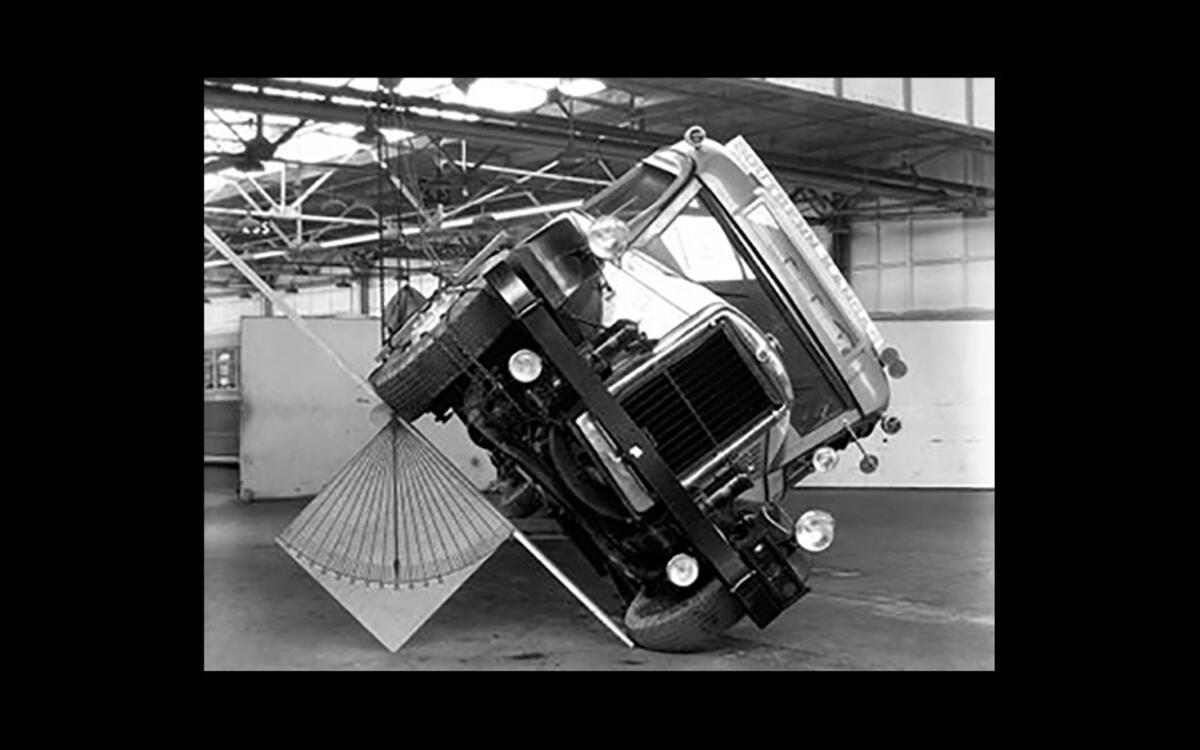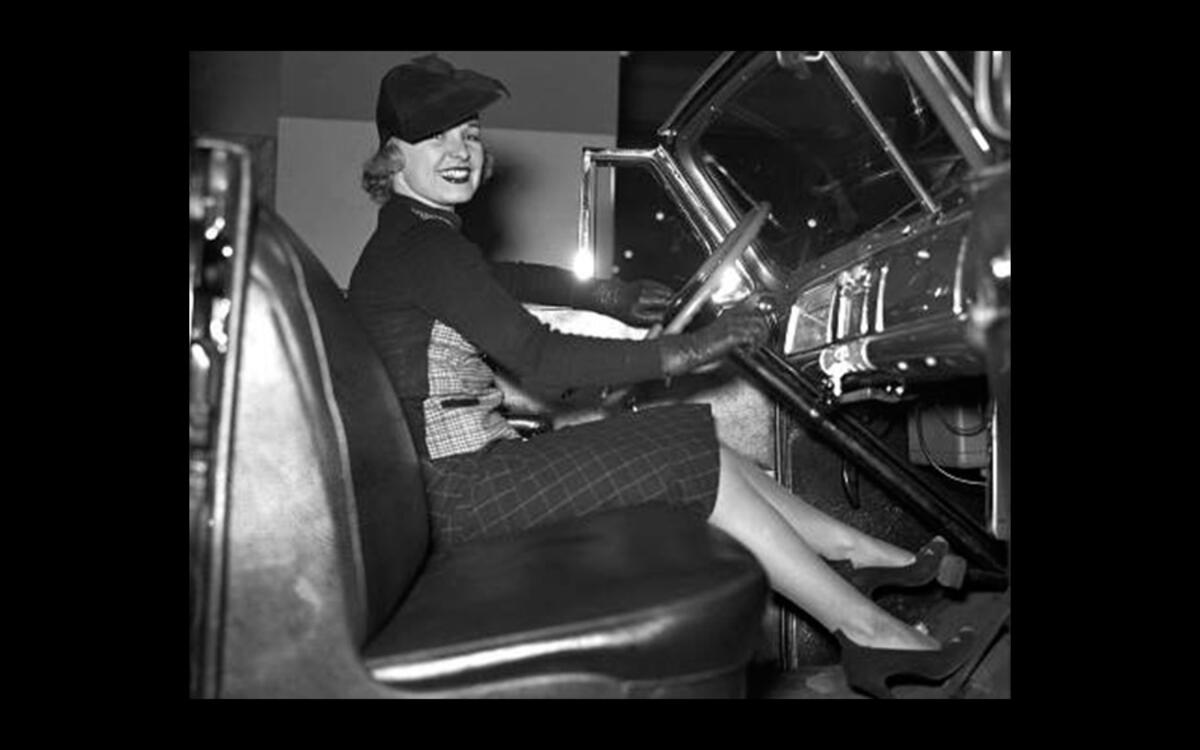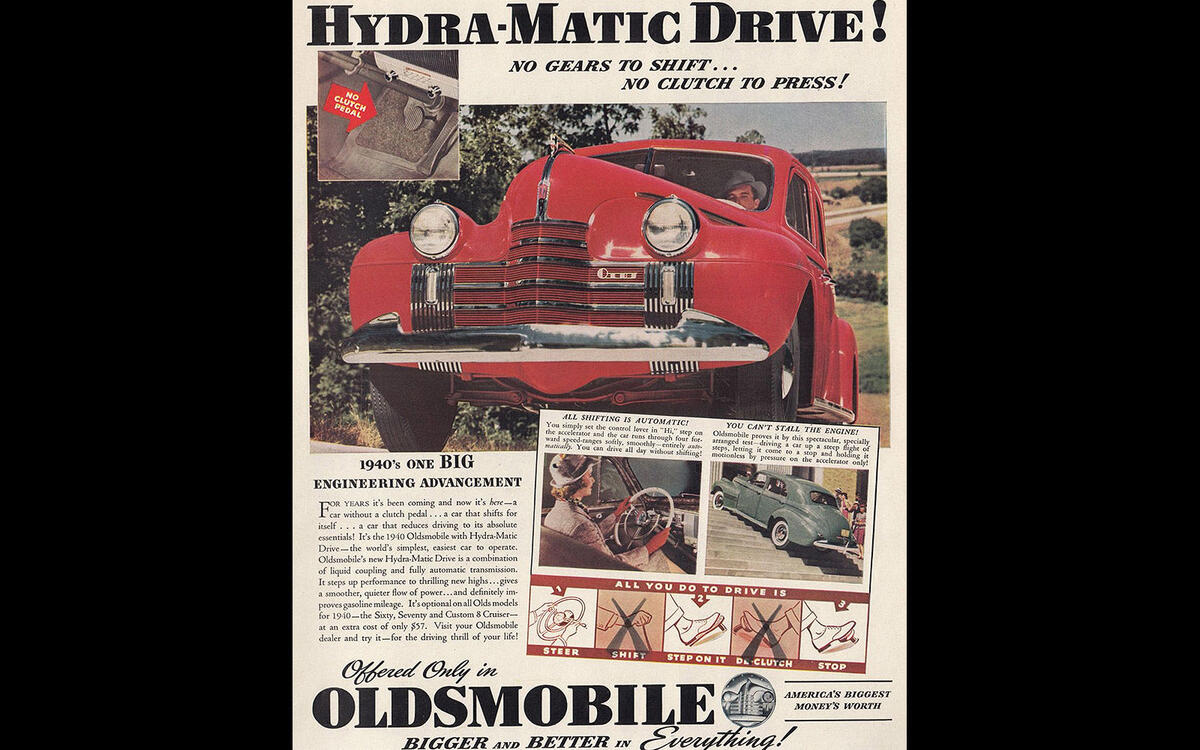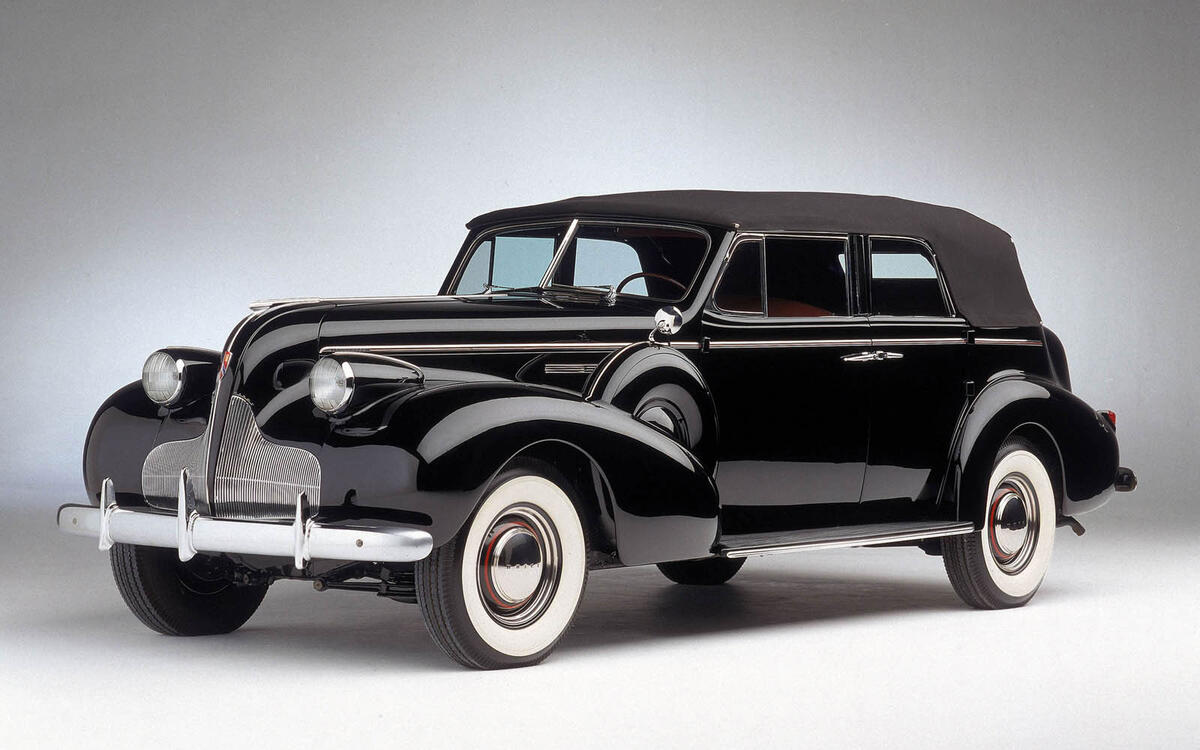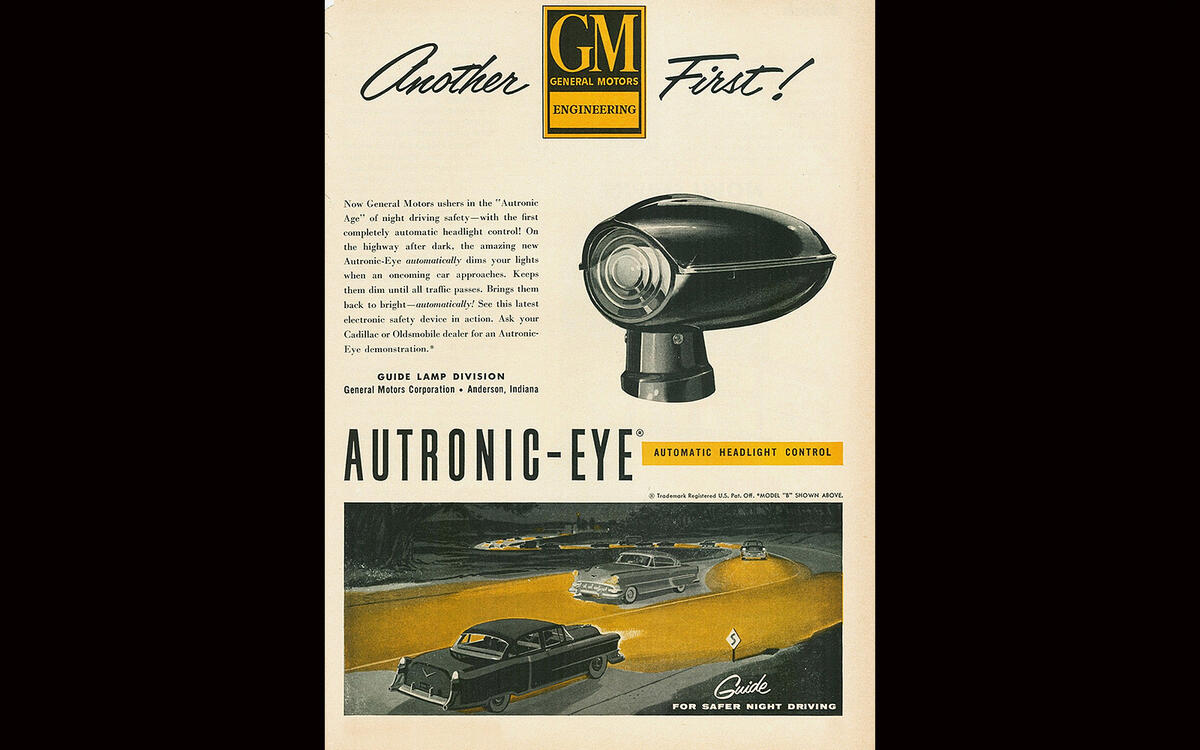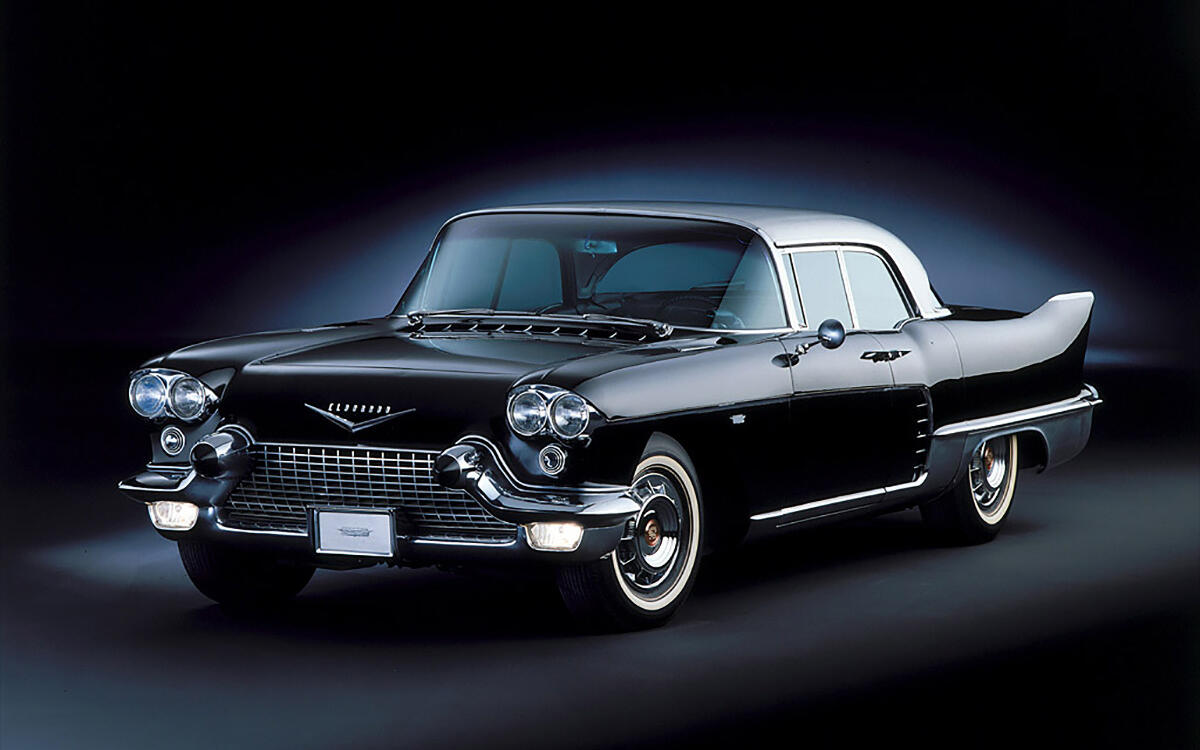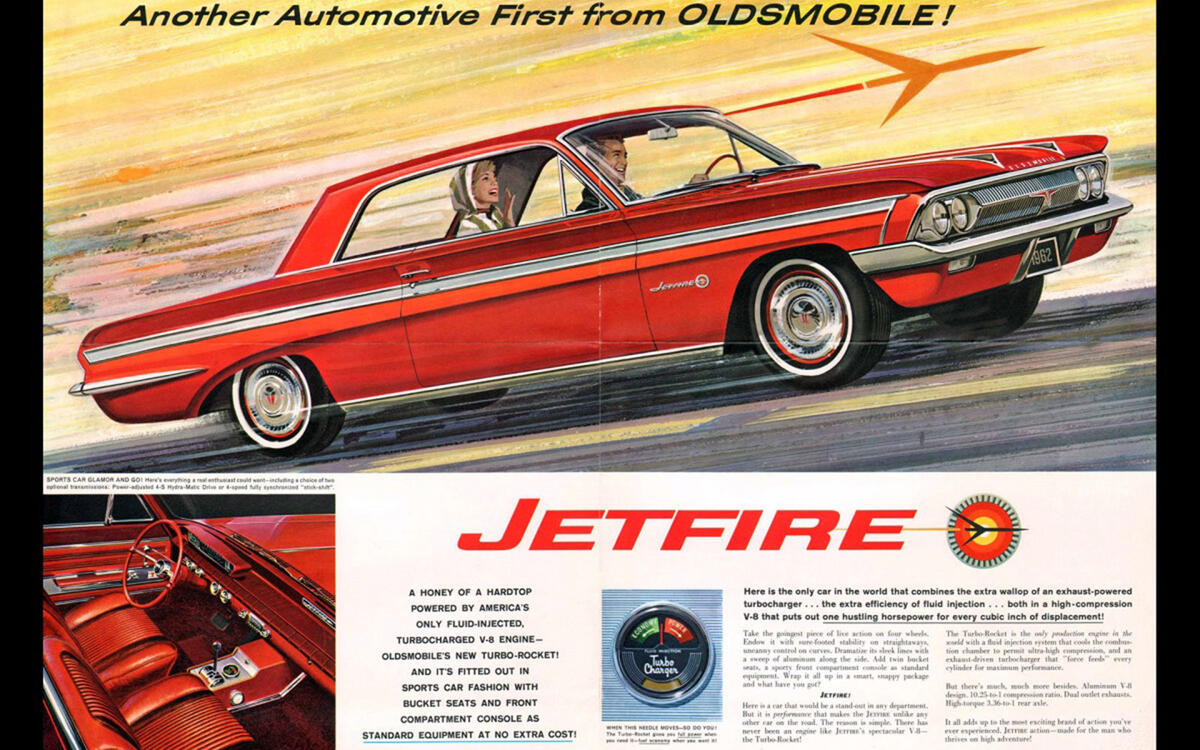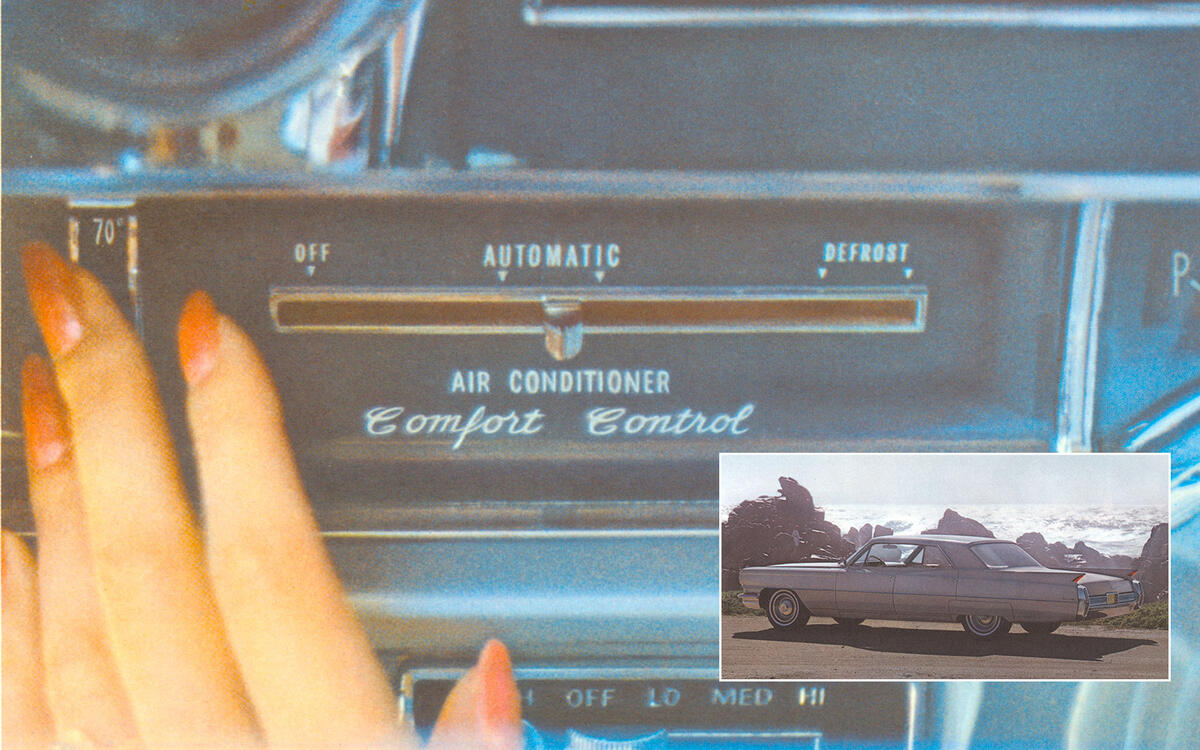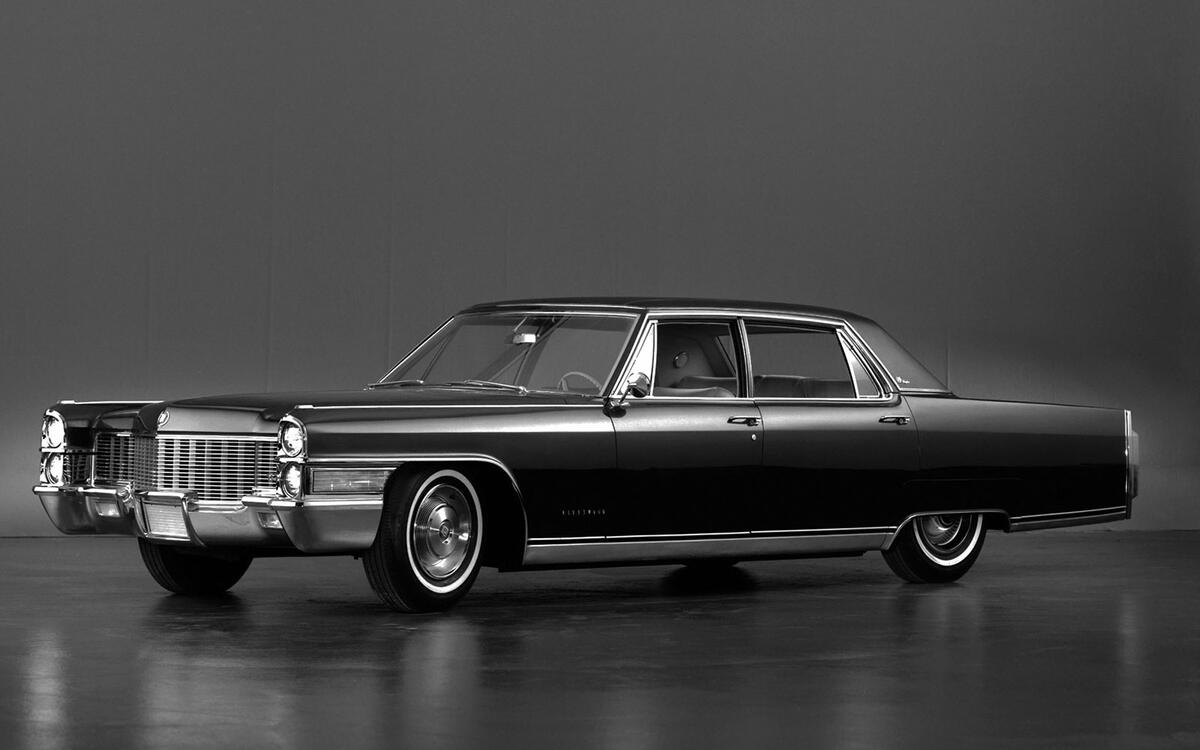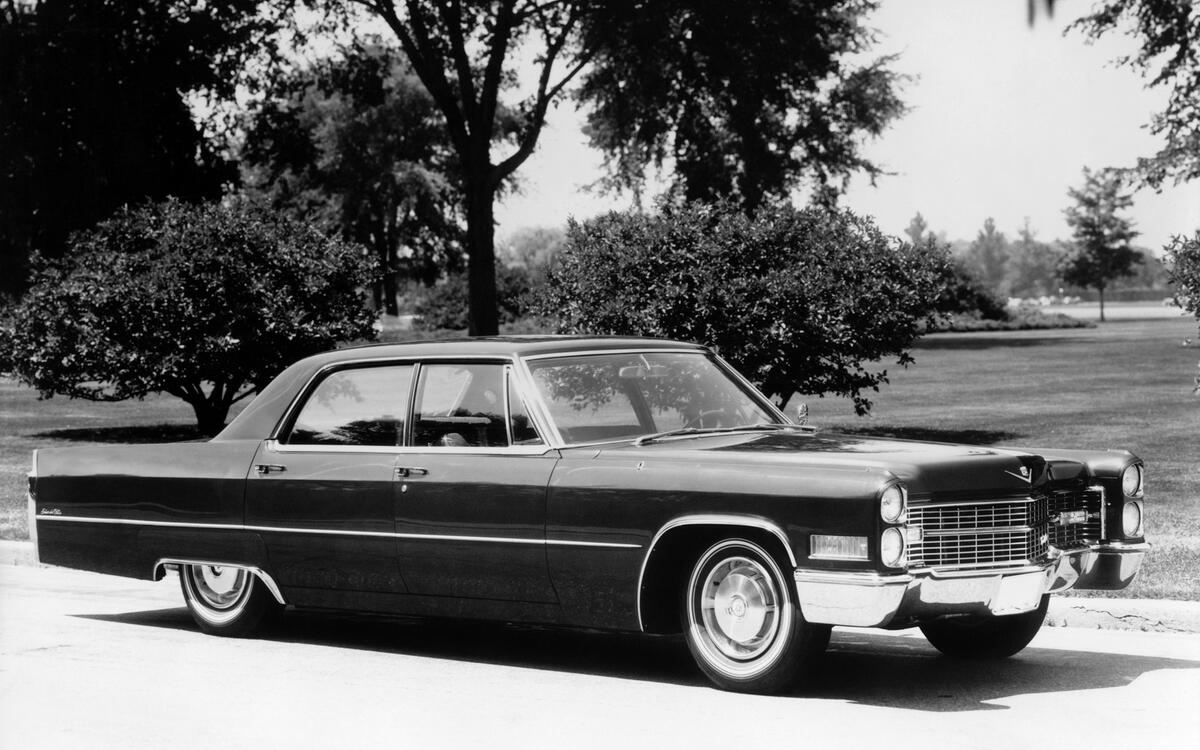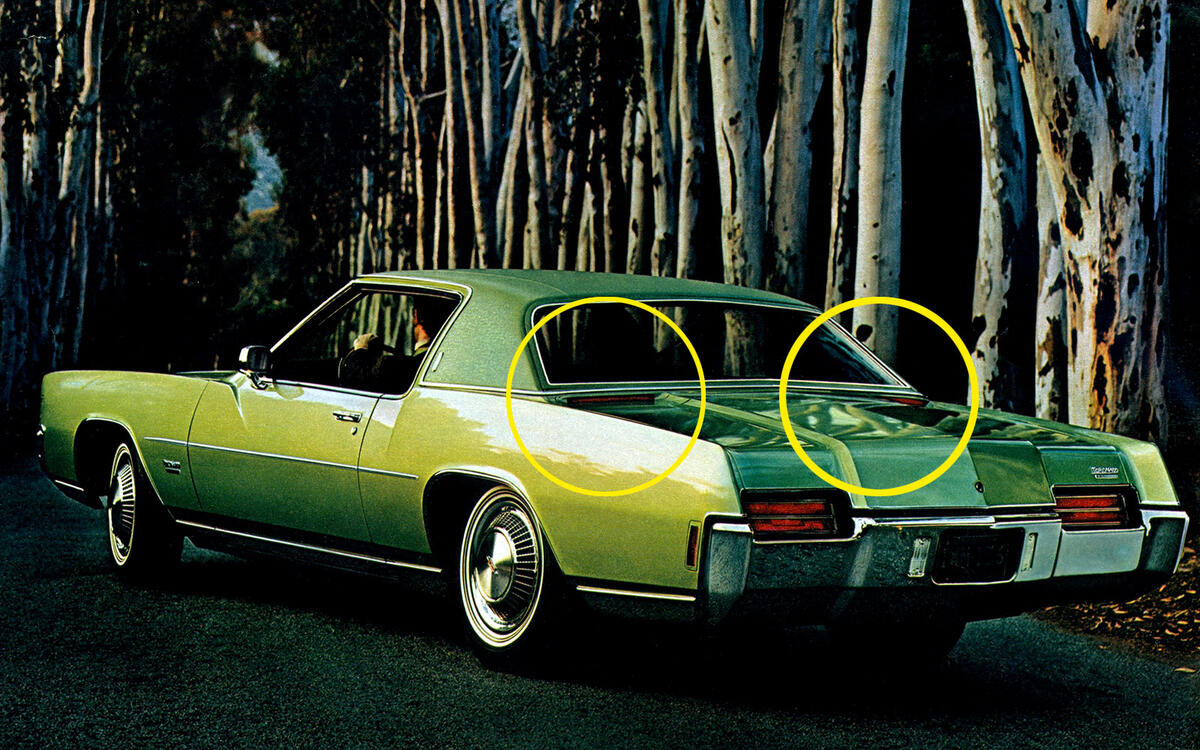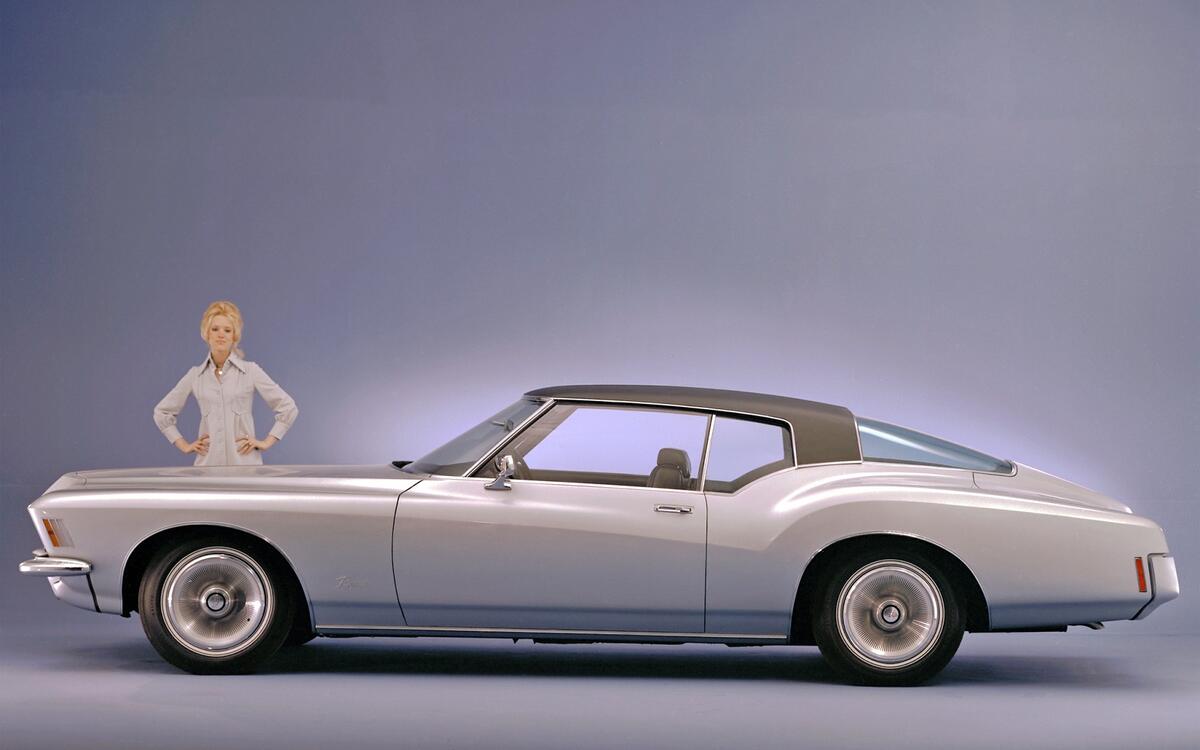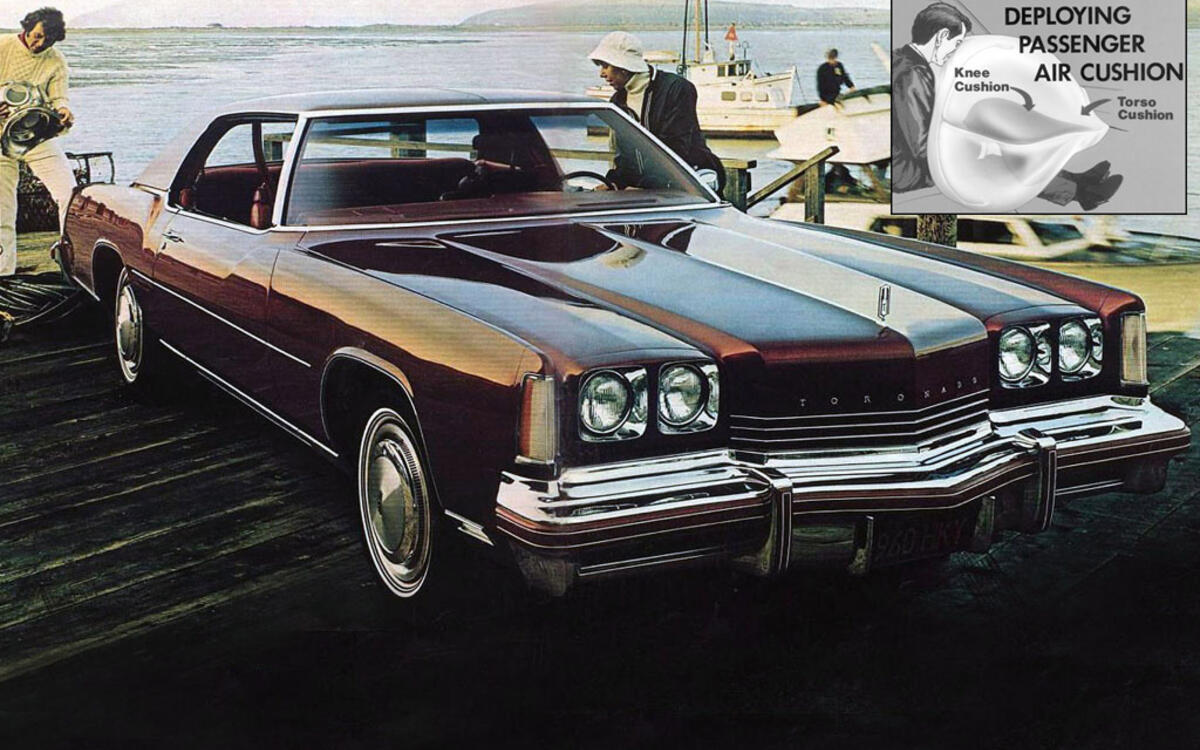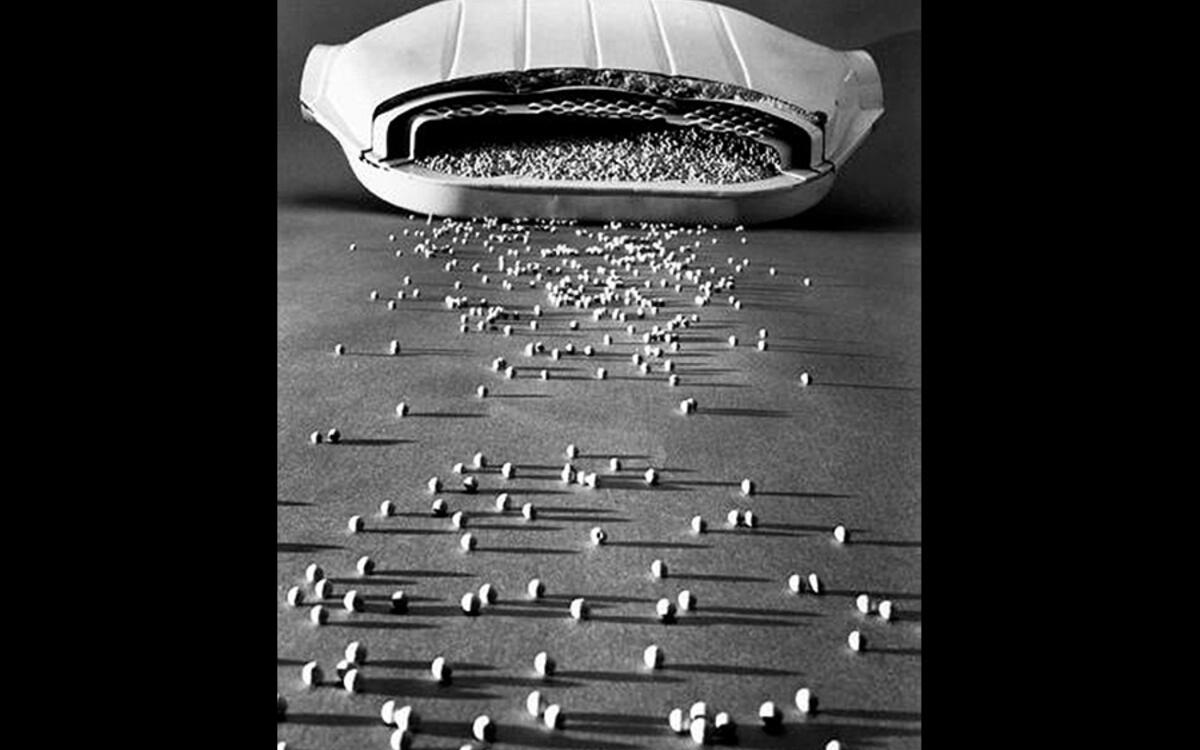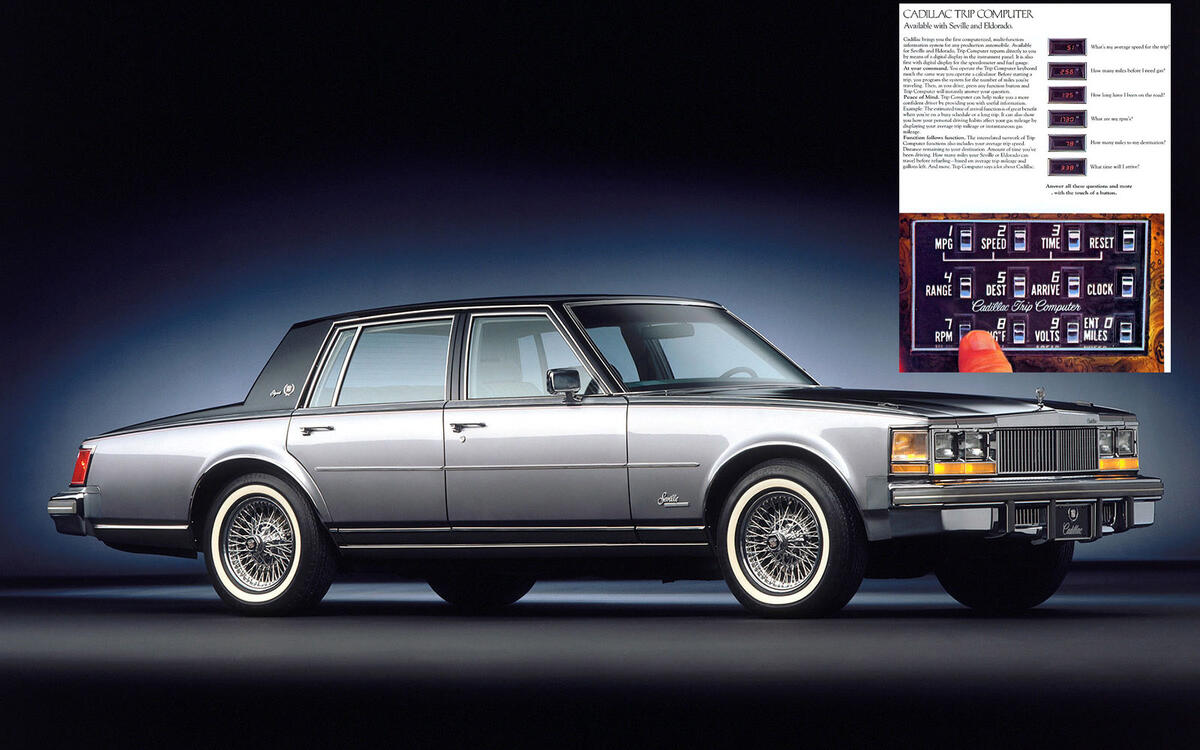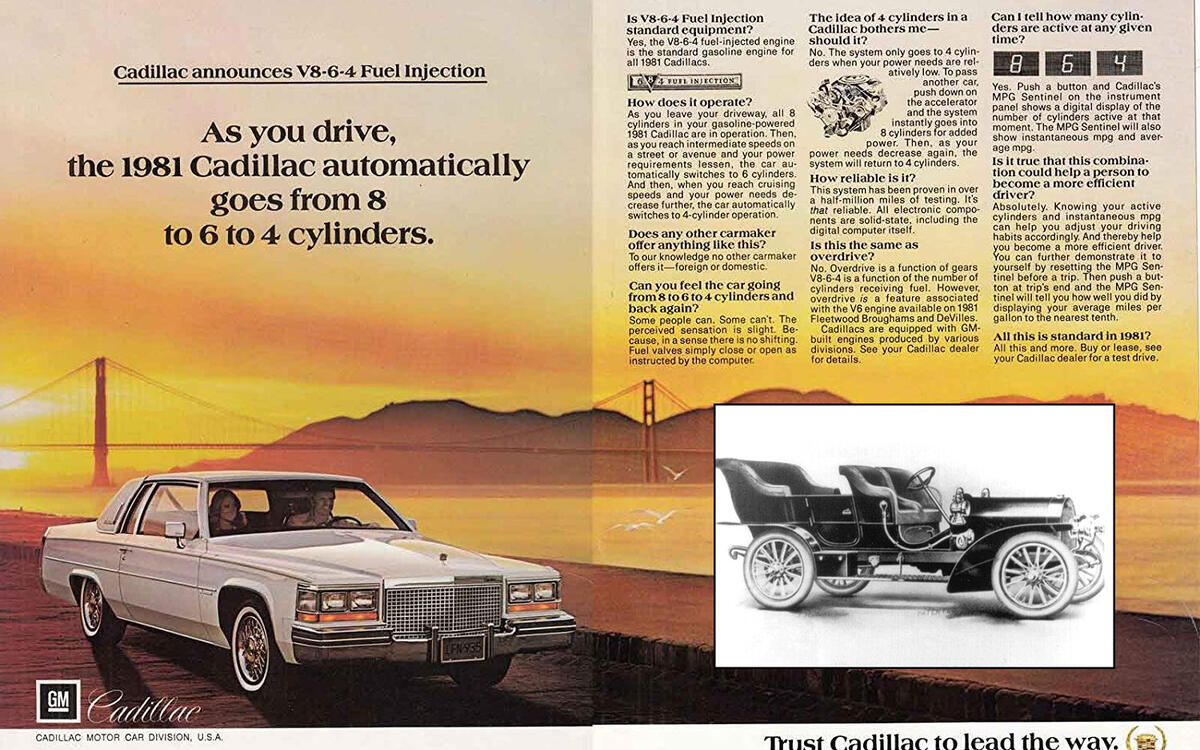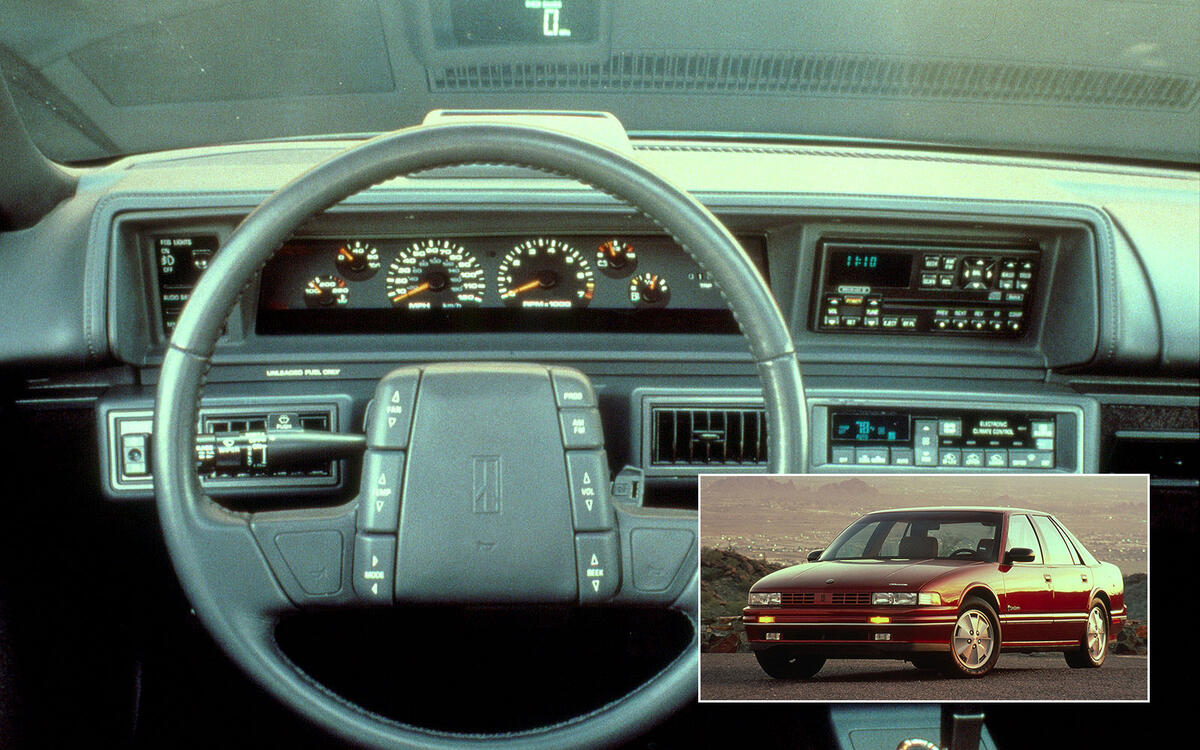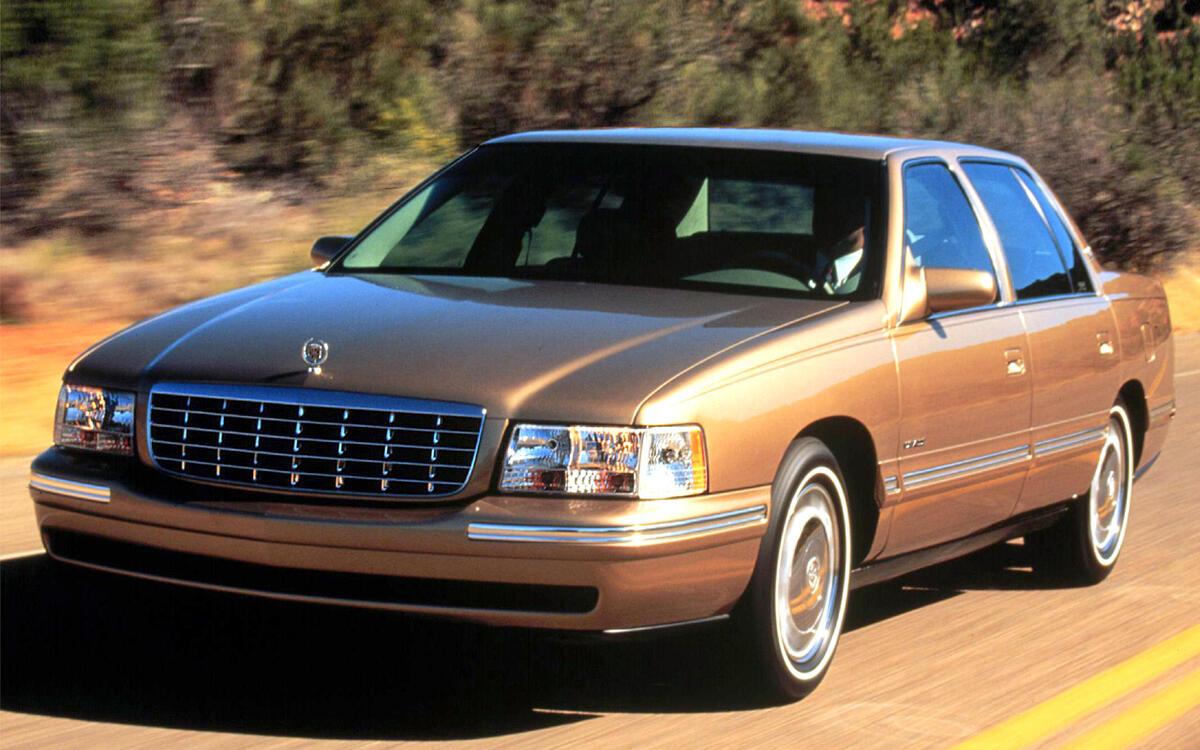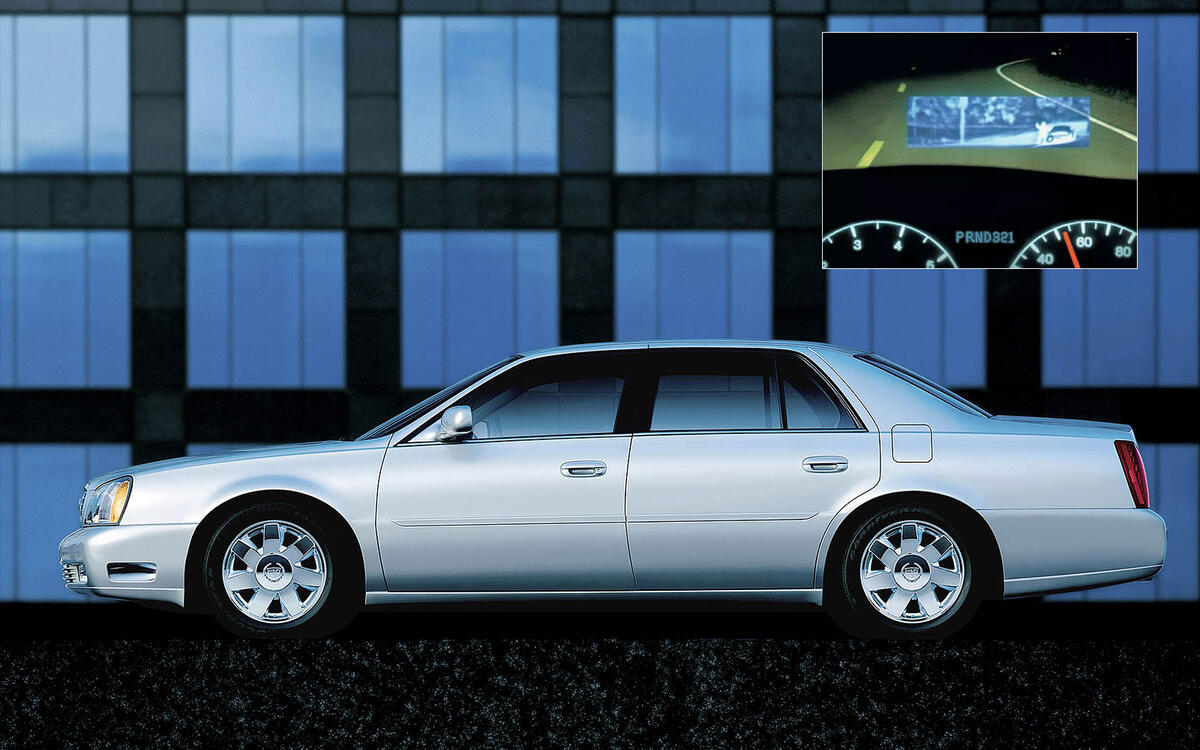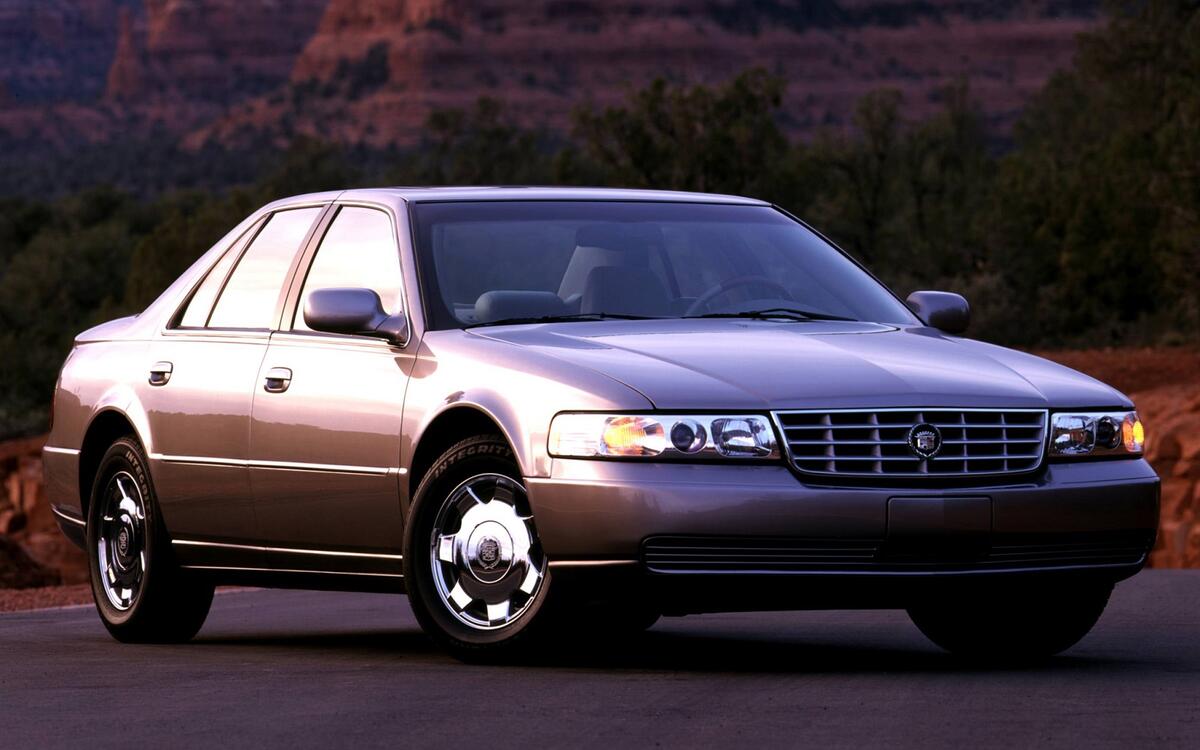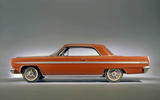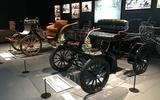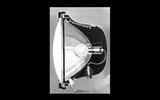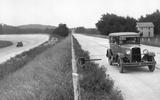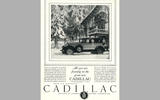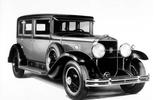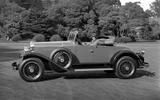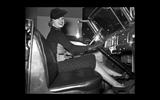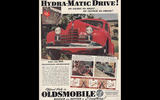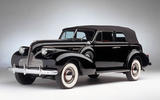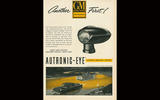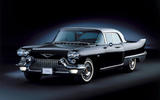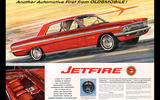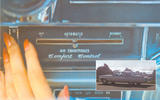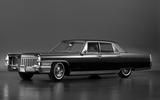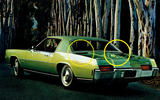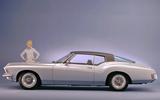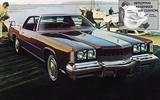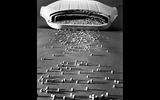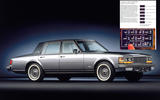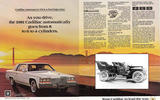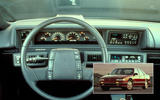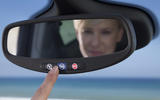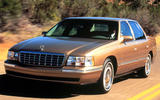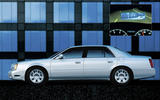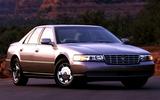 Slide of
Slide of
The strike at General Motors is now behind it.
The longest US car company strike in over a decade cost the company $2.9 billion and closed 34 factories, and also disrupted plants in Canada and Mexico. Workers voted at the end of October to approve a new deal with the company.
As the firm starts to turn out cars again, it's time perhaps to remind ourselves what GM - and its workers, executives, inventors, everyone - has done for the automotive world.
Encompassing famous marques such as Cadillac, Chevrolet and Buick, as well as long being one of the largest car firms, it’s also been one of the most innovative. The first genuine conglomerate in the car world, it got to take its expensively acquired innovations and spread them far and wide across its brands, often to great effect.
We’re going to take a look at all the technologies, approaches and techniques that GM has championed, and (where relevant) were first pioneered on a production car, all of which have made the automotive world a better place, in one way or other. Join us to see how GM changed the car world for the better:
Slideshow story - please click right-hand arrow above to continue
 Slide of
Slide of
MASS-PRODUCED CAR: Curved Dash Oldsmobile (1901)
Time to explode a myth: the Ford Model T was not the world's first mass-produced car. It was the world's first mass-produced car to sell in really big numbers thanks, but it was the Curved Dash Oldsmobile that was the first car to be built using mass-production techniques.
However, just 19,000 or so examples were made between 1901 and 1907, whereas more than 16.5 million Model Ts were made between 1908 and 1927.
 Slide of
Slide of
ELECTRIC STARTER: Cadillac (1912)
Starting an internal combustion engine (ICE) car with a crank handle involved strength and forebearance, and was offputting especially for women. Indeed, Clara Ford - wife of Henry - drove a non-Ford electric car for many years for that reason. The irritation encountered from trying and failing to crank a car even gave birth to the word ‘cranky.’
Cadillac had become part of GM in 1909, and in 1912 pioneered the on-board electrical system, which powered lighting but also enabled starting the engine at the touch of a button – an enormous boon and swiftly imitated by competitors; Ford’s Model T got the feature in 1919. Additionally, it finally ensured victory for the ICE over the electrically-powered version – at least for 100 years or so.
 Slide of
Slide of
V8 ENGINE: Cadillac (1915)
Ending the crank problem also solved another related problem: starting a large-engined car featuring many cylinders was physcially much harder than cranking a small motor. So the electric starter opened the door to larger, faster cars, and Cadillac were the first to the punch with its V8-equipped Type 51.
It’s almost impossible to imagine car culture in America – and indeed the wider world – without the V8 engine. But it had to start somewhere. Cadillac assuaged demand for a still faster, more powerful car with the industry’s first V-type, water-cooled, eight-cylinder engine.
The 314-cubic-inch (5.1-liter) engine was good for a great-for-the-period 70bhp at a relatively languid 2400rpm and enabled a 65mph top speed. Cadillac has been primarily about V8s ever since.
 Slide of
Slide of
DIPPING HEADLAMPS: Cadillac (1917)
Having introduced cars to internal electrical systems and thus enabling half-decent headlamps, Cadillac deduced a key problem: to enable safe high-speed driving at night, the headlamps needed to be angled to light a fair distance ahead.
But in the process this blinded drivers of oncoming vehicles, making it more likely they will crash into you. In 1917, Cadillac fitted a leaver in the interior that could dip the headlamps as you drove along.
 Slide of
Slide of
FIRST PROVING GROUND: Milford (1924)
The public road is a lame place to test new vehicles. Quite apart from safety considerations, you also didn’t want the general public to become aware of your hot new car before it was ready. So the logical decision for GM was to build its own testing facility, however this was going to be vastly expensive and time consuming. But, then again, if you’re a large car company able to spread its costs across its brands, then it made sense.
Opened in 1924, GM’s Milford, Michigan, facility became the industry’s first and is spead across 10 square miles, and has around 132 miles of roads specifically designed to reflect varying conditions found on the public road. Located 40 miles north-west of Detroit, it operates to this day. Milford was later used as the model for GM’s European proving grounds completed at Dudenhofen, near Mannheim in 1966 and Millbrook, north of London, in 1970.
 Slide of
Slide of
ELECTRIC WINDSCREEN WIPERS: Cadillac (1927)
Hand-cranked and vaccum-operated windscreen wipers were introduced in the early 1900s. In 1926 Germany’s Robert Bosch patented a wiper mechanism powered by electricity and Cadillac offered it from the following year, but it was unreliable so it was soon axed.
Electric wipers became common again in the 1940s.
 Slide of
Slide of
SYNCHROMESH MANUAL GEARBOX: Cadillac (1928)
Changing gears in the early decades of the car was quite a chore. It required a fair amount of physical strength and was quite literally a grind, requiring careful coordination of gearleaver and clutch.
This innovation eliminated the chafing noise and friction of changing gear, and laid the foundation for further GM-led advances in transmission which would occur a decade later, of which more in a moment.
 Slide of
Slide of
CAR RADIO: Cadillac LaSalle (1929)
The 1929 Cadillac (and its LaSalle offshoot) was the first production car to be available with a radio. The Delco-Remy unit was installed by the dealer prior to delivery to customers. It was expensive, bulky and suffered significant signal interference, but it was a start.
GM worked to improve it, and in 1937 Buick produced the first production car with a speaker set into the dash, separate to the radio unit. Push-button tuning also arrived around the same time, in a Chevrolet.
 Slide of
Slide of
METALLIC PAINT: Chevrolet (1932)
Which firm got to metallic paint first? Opinion is divided. It seems Cadillac listed it from 1933 and Hupmobile from 1934, but were both pipped to the post by Chevrolet, which allowed its cars to be finished in metallic paint from as early as 1932.
Paint mixed in with roughly 2% powdered metal, metallic paint makes cars looks better than those with solid colours, it reflects light better, has a sparkling effect visible on closer inspection, and tends to resist fading for longer. All of this tends to help vehicles that have it retain higher value.
 Slide of
Slide of
FIRST BARRIER IMPACT AND ROLLOVER TESTS (1934)
Statistically, driving was very dangerous in the early decades of the motor car. In 1934 in America, there were 29 road deaths per 100,000 of population, compared to 11 in 2017. With the facilities offered by Milford, GM could conduct the industry’s first barrier impact tests and rollover tests.
Such tests quickly got taken up by GM’s competitors and would be ultimately adopted by regulators worldwide.
 Slide of
Slide of
FIRST COLUMN-MOUNTED GEARSHIFT: Pontiac (1938)
Pontiac introduced the world’s first column-mounted gearshift in 1938. The lever to change gears was placed under the steering wheel rather than on the floor. This not only made gear-shifting simpler and less distracting for but also made room for a third passenger in the front seat.
It also laid the way for the even more profound innovation coming next:
 Slide of
Slide of
AUTOMATIC GEARBOX: Oldsmobile (1939)
Until the introduction of the Oldsmobile Hydra-Matic in 1939 for the 1940 model year, if you wanted to drive a car you had to change gears yourself. Not any more, thanks to this car’s four-speed slushbox. The automatic would go on to become the dominant gearbox type after the Second World War in America, especially. A very notable innovation indeed from GM.
 Slide of
Slide of
FLASHING INDICATORS: Buick (1939)
For the first few decades of automotive life drivers simply put their arm out to show where they wanted to go.
Then in the 1920s ‘trafficators’ emerged, with illuminated arms emerging from the bodywork, operated by lever by the driver. These endured for surprisingly long on cheaper cars, but in 1939 Buick became the first company to fit flashing indicator lights.
 Slide of
Slide of
AUTOMATIC HIGH BEAM: Oldsmobile (1952)
Having given us driver-dimmable headlamps back in 1917, GM went one better in 1952, when Oldsmobile launched headlights that dim themselves. Named Autronic Eye, the technology consisted of a light-detecting switch installed in a housing mounted on the driver’s side of the dashboard, and automatically dimmed the headlights when it sensed light from oncoming cars; it charged about $470 (roughly £600) in 2019 money for the option.
However it proved unreliable and too sensitive to other light sources like billboards, but GM has fine-tuned it and offered it in more cars, including several Cadillacs and Buicks.
Today, more sophisticated systems are quite common, with the best of them adjusting headlights to avoid blinding oncoming cars while at the same time optimising illumination. But even now, the system cannot be 100% relied on and some drivers switch the systems off.
 Slide of
Slide of
AIR SUSPENSION: Cadillac Eldorado Brougham (1957)
A feature that even now is fitted to only the most luxurious of cars, Cadillac introduced air suspension on its top-of-the-line models more than half a century ago. This gave the car a true magic carpet ride, and improved body control and handling.
As with many pioneers, this journey wasn’t straightforward and the system initially proved unreliable.
 Slide of
Slide of
TURBOCHARGER: Oldsmobile F-85 Jetfire (1962)
The Oldsmobile F-85 Jetfire was the world's first production turbocharged car. With a Garrett turbo unit added to a 3500cc V8, engine power was boosted by 16% to 215bhp. This enabled this relatively large car to crack 0-60mph in 9.2sec, a full five seconds faster than the non-turbo version. A turbo was also fitted to the Chevrolet Corvair’s six-cylinder engine at around the same time.
The early engines proved unreliable, and ultimately only 3765 Jetfires were sold in the two years it was on sale. The 3500cc compact alloy V8’s design and tooling were later sold to Rover and used in a wide range of its cars including the first Range Rover – though never in turbocharged form.
 Slide of
Slide of
CLIMATE CONTROL: Cadillac Sedan de Ville (1964)
Wisconsin’s Nash Motors launched the first practical in-car air conditioner in 1954, and the feature rapidly became a must-have item for cars in America. GM got there first in the battle to improve it, fitting automatic ‘comfort control’ air conditioning on the 1964 Cadillac Sedan de Ville among certain other GM models.
The driver set the desired temperature, and it stayed there, in theory.
 Slide of
Slide of
ADJUSTABLE STEERING WHEEL: Cadillac (1965)
For the 1965 model year, Cadillac introduced a steering wheel that could be adjusted for both reach and rake. Today, some cars still don’t offer this feature.
PICTURE: 1965 Cadillac Fleetwood Sixty Special Brougham
 Slide of
Slide of
HEATED SEATS: Cadillac DeVille (1966)
GM employee Robert Ballard patented the heated seat in April 1951. It took four years for the American government to grant him the patent and another 11 years for the feature to make its way to a production model.
In 1966, the Cadillac DeVille became the first car to offer heated seats; the option cost $467 in 2019 dollars (roughly £600). If you wanted a massage as well you had to wait until 2000, when they also first appeared in a Cadillac DeVille, as well as the Mercedes-Benz S-Class, at more or less the same time.
 Slide of
Slide of
HIGH LEVEL BRAKE/STOP LIGHTS: Oldsmobile Toronado (1971)
The first rear brake/stop lights in the 1920s had to be operated manually, which wasn’t helpful. Automatic ones followed later. Rear-end impacts in traffic are one of the most common types of road accident and at speed, the consequences can be serious, and a study of the taxi fleet of San Francisco proved how a brake light nearer the line-of-sight of the driver behind could help reduce crashes.
While the 1968 Ford Thunderbird had an option to place lights at the sides of the rear window, the fitment of strip stop lights on the trunk of the 1971 Oldsmobile Toronado (circled in image) was a clear innovation as they clearly signalled where this important safety technology was going. High-level lights became mandatory on all new cars sold in the US from September 1985.
PICTURE: 1972 Oldsmobile Toronado
 Slide of
Slide of
ELECTRONIC TRACTION CONTROL: Buick Riviera (1971)
Buick introduced an early version of today’s traction control systems on the 1971 Riviera, named MaxTrac. The system relied on a device Buick called a ‘miniature transistorized computer’ to compare the speed of the car’s wheels and reduce the engine’s output when it detected the rear wheels were spinning.
 Slide of
Slide of
AIRBAGS: General Motors range (1973)
John Hetrick invented the airbag in 1952 but it wouldn’t be until the 1970s that there would be widespread usage of this ‘supplementary restraint system’. Ironically GM’s nemesis Ralph Nader – who criticised the company over the handling of the Chevrolet Corvair in his 1965 book ‘Unsafe at any speed’ – was one of the first to highlight the potential benefits of airbags.
GM was the first to offer the technology in its full-size Buick, Cadillac and Oldsmobile models of the 1974 model year. It was known as an ‘Air Cushion Restraint System’. Airbags for both front occupants would become mandatory in America from September 1 1998. America's National Highway Traffic Safety Administration estimates airbags saved nearly 40,000 lives in the U.S. alone from 1987-2012.
 Slide of
Slide of
CATALYTIC CONVERTERS: General Motors range (1975)
GM pioneered the first emissions control system in the late 1950s with the introduction of the PCV valve, but the problem of smog and other pollution wasn’t resolved. Catalytic converters were first invented in the 1930s and enabled the production of higher octane gasoline from crude oil, but after WW2 the technology was developed to look at the emissions question.
Catalytic converters remove many harmful emissions such as hydrocarbons, carbon monoxide, and nitrogen oxide from a vehicle’s exhaust by converting them into less impactful gases like carbon dioxide and water vapor, by using a combination of platinum, palladium and rhodium as catalysts. But it didn’t work with leaded fuel, and thus encouraged the adoption of unleaded fuel.
GM became the first major US car maker to offer them as standard in 1974 for 1975 model year cars
 Slide of
Slide of
TRIP COMPUTER: Cadillac Seville (1978)
Though the first analogue trip computer was to be found in the Saab GT750 of 1958, the 1978 Cadillac Seville gave us the world’s first electronic trip computer. It offered a range of useful information, including fuel economy, estimated time of arrival and current range before a fill-up is required.
 Slide of
Slide of
CYLINDER DEACTIVATION: Cadillac (1980)
Tiny Boston-based firm Sturtevant built the first known cylinder deactivation system (pictured inset, above right) in 1905. Its system shut down three of the six cylinders while cruising, but the company folded shortly after. Then all went quiet before the recurrent fuel crises of the 1970s made GM reconsider the technology for the large-engined luxury cars produced by Cadillac.
Caddy bravely made cylinder deactivation technology standard across its entire 1981 model range. V8-6-4 - a name which indicated it could run on eight, six or four cylinders of the L62 engine - was however blighted by slothful electronics. Many dealers quietly advised owners to switch the system off.
The problems meant this experiment lasted just one model-year, though like many technologies featured here V8-6-4 helped blaze a future trail – not the least when in-car computing power became much more capable than in 1981. Today the tech is used by Mercedes, Honda, Ford, and VW among others, while GM returned to the game in 2005.
 Slide of
Slide of
HEAD-UP DISPLAY (HUD): Oldsmobile Cutlass Supreme (1988/90)
Heads-up-displays had been around in aviation since the 1940s. GM’s newly-acquired defense arm Hughes Electronics correctly perceived the technology could be useful in cars too. It developed a system that was first placed in the Oldsmobile Cutlass Supreme Convertible Indy 500 Pace Car, 50 of which were offered to selected customers.
HUDs then became available on the Oldsmobile Cutlass Supreme sedan (pictured) as a cost-option in 1990, and it showed the car’s speed in a digital display. We wish they were more common today, as they are a boon to safety as they don’t require the driver to continuously focus and refocus their eyes between speedometer and the road.
 Slide of
Slide of
FIRST VEHICLE TELEMATICS SYSTEM: OnStar (1996)
OnStar was a relatively rare example of disparate parts of the GM empire working together to develop a groundbreaking technology. Helped along by its EDS (information technology) and Hughes Electronics (defence and satellite) arms, it was unveiled at the 1996 Chicago motor show. It offered hands-free communication with GM’s call centers helping with directions and emergency assistance.
In the event of a crash triggering an airbag, the car would automatically contact emergency services via the user’s cellphone signal and give the vehicle’s position, as located via GPS – a particular boon for the middle of nowhere, where accidents often occur. It can also help police track the vehicle if it’s stolen, and from the 2009 model year some models could be remotely slowed-down in the case of a theft being reported as well.
It was first featured on the 1997 model year Cadillacs DeVille, Seville and Eldorado. The technology was later licensed for a time to Acura, Isuzu, Subaru and Volkswagen. Today OnStar has around 10 million subscribers globally, who pay $25 a month or so for the service.
 Slide of
Slide of
AUTOMATIC WIPERS: Cadillac (1996)
Citroën introduced a rudimentary wiper system in the 1970s, but General Motors launched a fully electronic set-up on its 1996 Cadillac STS, Eldorado and DeVille. Called Rainsense, the system was available on Buicks just a few months after Cadillac got the technology.
 Slide of
Slide of
NIGHT VISION: Cadillac DeVille (2000)
In 2000 GM teamed up with defence giant Raytheon to make Cadillac the first car to offer Night Vision, in posher versions of the DeVille. It used an infra-red sensor to highlight objects of safety interest onto a monochrome Heads Up Display.
The option was quite pricey - $1995 - but take up of this novel invention was quite high at first. 7000 owners ticked the box in the first year, but this tailed off to just 600 in 2004, and the option was dropped in 2005; Cadillac didn’t return to the Night Vision scene until 2015, with its CT6 flagship.
 Slide of
Slide of
SATELLITE RADIO: Cadillac, 2001
In as large and dispersed a country as America, normal radio reception can often be poor, with none at all in truly out of the way locations. Satellite radio solves all that, enabling subscribers to access the same station to be listened to anywehere, without advertisements.
In 2001 GM teamed up with XM Satellite Radio to offer it on its DeVille and Seville (pictured) models for the 2002 model year, and it was later rolled out throughout the GM model range. Today, well over half of the new cars sold in the US feature satellite radio; around 50% of owners pay a monthly subscription.
With its damaging six-week strike now behind it, join us as we list all of the automotive inventions and conveniences brought to us by GM
Advertisement


